Should you get a cat?
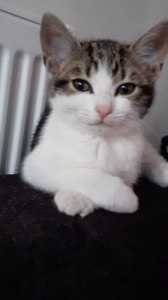 That’s something only you can answer but let us explore everything you have to consider being a cat owner!
That’s something only you can answer but let us explore everything you have to consider being a cat owner!
The first thing is commitment!
Are you ready to commit your life to them for the next 2-20+ years? The oldest cat on record lived until the grand old age of 38! Creme Puff who was born on 3 August 1967, lived until 6 August 2005 in Austin Texas! Now that in itself is quite the exception but with the right genetics, environment, diet etc it’s clearly possible for them to live a lot longer than initially anticipated and how you raise them can influence their life span!
Committing to a Cat is very rewarding, however they do come with their mischievous flaws. Some cats will keep you at paws length and only come to you on their terms. You simply cannot force your love upon them. They are very independent sentient beings, although some cats don’t mind it but please don’t get a cat if your reason for doing so, is wanting a cuddle buddy!
If you’re certain you’re ready for the life commitment then you may be wondering whether to buy from a breeder or adopt from a shelter/rescue.
Adopted Vs Bought
Adopted Cats are usually kittens due to accidental pregnancies. Rescues centres and shelters are full of both kittens or older cats who’ve been handed over for any number of reasons where the owners could no longer care for them. According to a study (Stavisky J, Brennan ML, Downes M, Dean R, 2012) showed a census that states in the year 2010, 20701 cats were euthanized in the UK simply due to economic reasons! This is the sad reality of what happens in rescue/shelters. This figure is however, is only 13.02% of all those abandoned into rescues/shelters, which seems small on paper but over 20,000 euthanized largely due to irresponsible owners that didn’t think about their commitment! Adoption sometimes isn’t without it’s challenges though, as you’ll be getting a cat that may have developed certain “behaviours” due to their history, however we can always label them loveable quirks!
Bought Cats buying cats is great, especially if you a want breed specific cat as it’s important to know their lineage for health reasons. It’s important your buy from a reputable breeder, who has all the necessary paperwork and insurances….
Once you’ve got your cat/kitten at home, you’ll be wondering whether to let them out or keep them at home? Let’s explore those options.
Outdoor Vs Indoor Cats
Outdoor cats are said to live an average of 2-5 years. This usually applies to feral cats who often succumb to accidents, such as being hit by cars, parasite infestations, poisoning, malnutrition, injury from encounters with wild canids like foxes and in some countries stolen for the meat market just to name a few!
Some owned cats also spend the majority of their time outdoors by preference, just returning to their owners with gifts such as small birds and mice and to eat!
Some “Free Spirits” even disappear for weeks on end, utilising their natural instincts, which is why their owners aren’t liable for any mishaps!
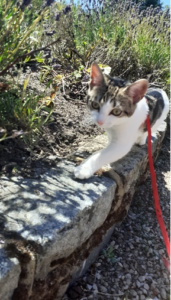 Indoor cats are said to live on average 12.5 years, however many are now hitting 20 years plus! This doesn’t mean they spend 100% of their time indoors but they have a “domestic home” where they can be safe. When they do go outdoors however, they are exposed to the same risks as a feral cat! They especially run the risk of unwanted pregnancies, fights with other cats but most commonly, being run over!
Indoor cats are said to live on average 12.5 years, however many are now hitting 20 years plus! This doesn’t mean they spend 100% of their time indoors but they have a “domestic home” where they can be safe. When they do go outdoors however, they are exposed to the same risks as a feral cat! They especially run the risk of unwanted pregnancies, fights with other cats but most commonly, being run over!
Some cats do spend their whole lives indoors with the exception of being taken for walks on a leash by their owners, which is a great way to show responsible ownership! This keeps them out of harm’s way while allowing them to stretch their legs and be exposed to the wild which helps build up their immune system!
Well done, you’ve now made your second choice!
This next choice is 100% your decision as it’s a controversial topic and you’ll get many answers so please do your research.
Spaying/ Neutering
This topic is influenced by your last choice, are you planning on letting them out alone or keeping them in doors? If you’re planning on letting them out then this is something you really need to think about carefully. If you’ve adopted then you may not have this luxury of choosing as most rescues centres Spay or Neuter by default regardless of age.
In this scenario we will discuss the benefits/negatives of spay/neutering for a cat that goes outdoors.
Benefits of desexing can simply be sterilisation. You stop any unwanted pregnancies, which will likely lead to less kittens in the rescue centres (this is why the rescues do this by default as they see the side effects of unwanted pregnancies) It also stops the “heat” cycle which can be unbearable, especially if you have an indoor female cat, as they whale with the most prolonged Meooowwwww mating cry! This is a form of sexual frustration. You may find an increased love for you and they become clingy and rub up against your limbs as if you have toms nearby! Make sure to close your windows during this time as they’ll be sat on your window sills!
The overall benefits of desexing are largely based on the owners/global population benefit more so than the individual Cats.
Negatives of desexing are mainly influenced by the age of the cat when the procedure is done. If you’re planning Neutering/Spaying then opt for Ovary Sparing/Vasectomies if they’re not “Mature” as this ensures they keep their hormones for development, which is very Important when it comes to their longevity. Vets are carrying out these procedures at an increased rate over the years due to the benefits of leaving the hormones in place. The hormones contribute to bodily functions and are crucial in life stages, especially growth and development however, studies show that dogs are affected more by the benefit of this than cats. For cat’s it seems to be a neutral outcome so regardless of your choice, it’s important to keep cats lean post surgery, this is to avoid weight-associated endocrine disease! (Howe LM, 2015)
We’re finally getting somewhere, that’s three choices you’ve made so far! Check you out! Has your mind changed yet?
Let’s talk about Nutrition!
You will be responsible for their diet, which is a great factor which influences their whole health.
Cats are obligate carnivores, this simply means that they NEED meat to survive! This is because unlike dogs, they cannot synthesise their own taurine, however that doesn’t transpose to them not being able to eat plant matter, because they can. Inf act cats go mad for “catnip” which is a herb that contains a neutral oil called nepetalactone, which alters a felines behaviour, similar to a child on a sugar rush!
The common commercial cat foods out there are usually the following:
Wet food based such as tins and pouches. These are usually cooked meat with jelly (gelatin/bone broth/gravy) mixed with synthetic additives in respect of vitamins and minerals to ensure they get all they need. Most supermarket foods only contain 4% meat!!! Check it out for yourself.
“Complete” biscuits (nuts) which are largely made from plant matter, small meat percentages and the same synthetic additives, especially taurine.
You even get the Veterinary versions such as Hills(Colgate Palmolive) and Royal Canin(Mars Petcare) which usually get prescribed alongside various medications.
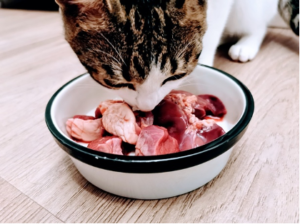 Thankfully in more recent times people have started to feed their cats a fresh raw meat diet, Raw diets have been growing in popularity since the likes of social media has been able to show millions of people around the world the benefits of such a diet. A popular feeding model for cats (Ferrets too) is the Franken Prey model which is essentially putting parts of animals together to create balanced diet such as Chicken Wing, Chicken Liver, Lambs Kidney and Turkey mince which follows a common ratio of 80% Meat, 10% Bone and 10% Organ (Half being liver and another secreting organ like kidney)
Thankfully in more recent times people have started to feed their cats a fresh raw meat diet, Raw diets have been growing in popularity since the likes of social media has been able to show millions of people around the world the benefits of such a diet. A popular feeding model for cats (Ferrets too) is the Franken Prey model which is essentially putting parts of animals together to create balanced diet such as Chicken Wing, Chicken Liver, Lambs Kidney and Turkey mince which follows a common ratio of 80% Meat, 10% Bone and 10% Organ (Half being liver and another secreting organ like kidney)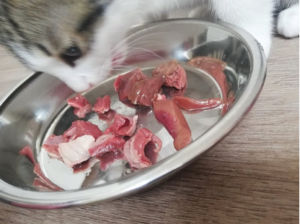 This is an example of 1 meal composition but you you should mix and match this diet over time.
This is an example of 1 meal composition but you you should mix and match this diet over time.
The other method is by feeding whole prey as nature intended such as day old chicks, quails, rats, mice, squirrels etc, which is basically the kind of prey they catch in the wild and bring home as gifts for you. When it comes to moisture, you can’t get better than this!
The choice is yours to make, however I will say this…. when it comes to cats and even a dog’s diet, moisture is really important, it helps the internal organs provide an adequate level of enzymes to digest the food. It’s been shown that low moisture foods, such as dry foods in combination with protein/phosphorus can overload the kidneys and can lead to renal failure, although the studies blame the protein and phosphorus rather than the lack of moisture (Alexander J, Stockman J, Atwal J, et al, 2018) NOTE…this particular study was funded by Mars Petcare via the Waltham Centre for Pet Nutrition (Who are owned by Mars Petcare) So take from that what you will.
Well done that’s the 4th choice you’ve made….
This next one is influenced by Choice 2!
Exercise
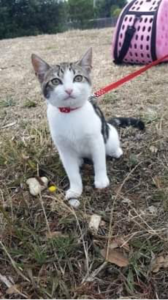 If you let your cat venture outside, they will manage this for themselves but if you have a house cat, it’s your responsibility to ensure they get enough exercise both physically and mentally. You may be wondering how? Well as previously mentioned you can walk them just like a dog, however as indoor cats are typically skittish to the outside world, it’s usually best practice to take them in a carrier until you are somewhere away from traffic and noise so they can venture around on their lead in safety. Don’t do this around dogs off the lead or around certain birds such as swans!
If you let your cat venture outside, they will manage this for themselves but if you have a house cat, it’s your responsibility to ensure they get enough exercise both physically and mentally. You may be wondering how? Well as previously mentioned you can walk them just like a dog, however as indoor cats are typically skittish to the outside world, it’s usually best practice to take them in a carrier until you are somewhere away from traffic and noise so they can venture around on their lead in safety. Don’t do this around dogs off the lead or around certain birds such as swans!
Don’t do this with kittens if you live by the coast or anywhere that seagulls are present as they will view your kitten as fair game, even chihuahuas have been taken by these birds!
If you don’t want to take them out like this or you aren’t physically able to, then don’t worry, you can make your home feline friendly! With a cat tree! Cat Trees are an excellent way for cats to get their exercise and burn off some energy both physically and mentally.  They come in all shapes and sizes like the one pictured here. These trees are also ideal for cats that live in houses with toddlers as they’ll sleep up high out of the toddlers If your child can climb, then then you may find them asleep on top of your kitchen units instead! Another benefit of cat trees is that they usually have scratch posts attached, which cats will use to maintain their claws. This also helps save your furniture as many cat owners have experienced shredded door frames, sofa’s, carpets etc. While these tree’s aren’t 100% effective to stop this, they will definitely help!
They come in all shapes and sizes like the one pictured here. These trees are also ideal for cats that live in houses with toddlers as they’ll sleep up high out of the toddlers If your child can climb, then then you may find them asleep on top of your kitchen units instead! Another benefit of cat trees is that they usually have scratch posts attached, which cats will use to maintain their claws. This also helps save your furniture as many cat owners have experienced shredded door frames, sofa’s, carpets etc. While these tree’s aren’t 100% effective to stop this, they will definitely help!
Choice number 5, coming right up!
Cat Litter/ Litter Tray
This choice is as much yours as the cats, some cats are finicky about where they do their business so if you adopt a Cat ask the rescue/shelter what they’ve been using so you can try to match it. A tip would be to have one for each room or at least each floor of the property purely because some cats develop incontinence issues and having a tray nearby will help save your carpets and ensure they have 24/7 access. If you get your cat from a breeder, the same suggestion applies. Ask them what they’ve been using and match it. Kittens are more adaptable to change so will usually transition nicely.
Cat Litter there are various types of commercial cat litter but they typically falls under two categories, “Clumping” and “Non Clumping”. Manufacturer will usually give you “directions of use” on the packaging. There are many options for materials, some of which are country dependant but you’ll find they mostly come in the following…
- Clumping Clay**
- Non Clumping Clay**
- Silica Gel Crystals**
- Pine**
- Corn
- Grass
- Walnut Shells
- Wheat
- Recycled Paper
I’ve put ** next to the most common, please read all their labels for safety guidelines as some can be dangerous if ingested, such as the Silica Gel Crystals. This can happen over a long period of time as the cats ingest small amounts of silica as they clean their feet!
Litter Tray again there are many versions of these and some or more ideal for the specific type of litter, due to their depth & width for example. Your cat will also choose their preference, you’ll see the following types:
- Open Litter Trays
- Hooded Litter Trays (These sometimes have a “Scent Blocker” vent with a course fabric to catch any odour.
- Top Entry Litter Trays. These look like small plastic washing baskets.
- Self-cleaning Litter Boxes (Expensive option, but could be ideal if you work long hours or go on holiday. Most are WIFI enabled too!
- Disposable litter boxes (unsure why these exist, but they do)
Regardless of your choice here, hygiene is really important so please take extra special care while cleaning litter trays while pregnant (or simply get someone else to do it for a while). Cat poo can cause you to get a toxoplasmosis infection which can pass on to the fetus and may cause birth defects, even miscarriage. (Shojaee, S., Teimouri, A., Keshavarz, H. et al ,2018)
It may also be good practice to avoid doing this if you’re immunocompromised. Changing the litter twice daily is a great way to prevent the risks of toxoplasmosis infections as the parasite in cat faeces is most infectious 1-5 days post shedding in cat faeces (Laura Kramer, 2009)
Who’d of thought Cat Litter could be so scary? However it’s something often overlooked by new owners, which is part of the commitment element, you have to think about other aspects of your life both current and potential!
Now I’ll cover a financial choice, now this is a big one but relevant for pets in general!
Vets Costs & Insurance
Veterinary costs are constantly increasing. According to Bought by Many there has been a huge increase in insurance claims over the last six year. In 2013, the average claim was €340. The cost of the average pet insurance premium has gone up by 50% in the last ten years, but the average claim has gone up by 75%! In more recent times, the cost of the average pet insurance claim increased from €850 in 2017 to €890 in 2018!!
This isn’t in reflection of ongoing treatment either, this is based on one off bills!
Above you’ll remember I mentioned kidney disease (renal failure) well this is one of the most common health implications in older cats and according to the London Cat Clinic, Chronic Kidney Disease has a cost of an average of €1125 for the initial diagnoses and treatment then €900 per annum for ongoing treatment! Pricey right?
On average Bought By Many states their cat insurance policy premiums are about €170 per annum (Based on their data from October 2019- October 2020).
If you do decide to take out insurance, make sure you read the small print. There may be a few sneaky clauses, such as 60% cover once the pet turns 9! Now this is important as for cats, their health implications start around then and you don’t want to be left with unexpected bills!
Whatever you do, please remember the old adage about a pet being for life. Getting a Cat, or any other animal for that matter, is a real commitment that requires some real consideration. If you do decide to commit, then do come see us here at The Pet Parlour, we will be happy to guide you the rest of the way.

